“Your bath can be a healing ritual—or a skin nightmare—depending on what you toss in the tub.”
A warm bath is more than just a means to relax—it can ease aching muscles, calm inflamed skin, and improve your mental health. But with the wrong additives, it can also cause dryness, rashes, and pH imbalance. Dermatologists and wellness experts say that not all bath additives are created equal.
In this article, let us explore some of the best and worst things to add to your bath.
Read More: Self-Care Beyond Bubble Baths: Practical Strategies for Busy Individuals
The Best Things To Add to Your Bath (Expert-Approved)
Let’s start with the best ones. Here’s a list of the best additions to your bath:
1. Epsom Salt (Magnesium Sulfate)

Epsom salt is a top-rated bath soak for skin and muscle recovery. It is a source of magnesium, a mineral most people lack.
Benefits:
- Reduces sore muscles and joint inflammation
- Helps with better sleep and alleviates stress
- Can enhance magnesium levels using transdermal absorption
As per a 2017 study published in Nutrients, magnesium aids in nerve and muscle function and can also help with post-exercise recovery (source). Soak 1–2 cups in warm water for 15–20 minutes.
Best For: Muscle cramps, PMS cramps, and relaxation.
You can check out Epsom salt here.
Read More: 12 Benefits of Epsom Salt Bath You Didn’t Know About
2. Oatmeal (Colloidal)

Finely ground oats that have been processed for use in water, colloidal oatmeal is the traditional go-to for dry skin and to reduce inflammation.
Benefits:
- Calms eczema, sunburn, and rashes
- Creates a protective barrier on the skin
- Reduces irritation and itching
The Journal of Drugs in Dermatology research confirms its anti-inflammatory and antioxidant effects, making it perfect for sensitive skin.
3. Essential Oils (When Diluted Correctly)
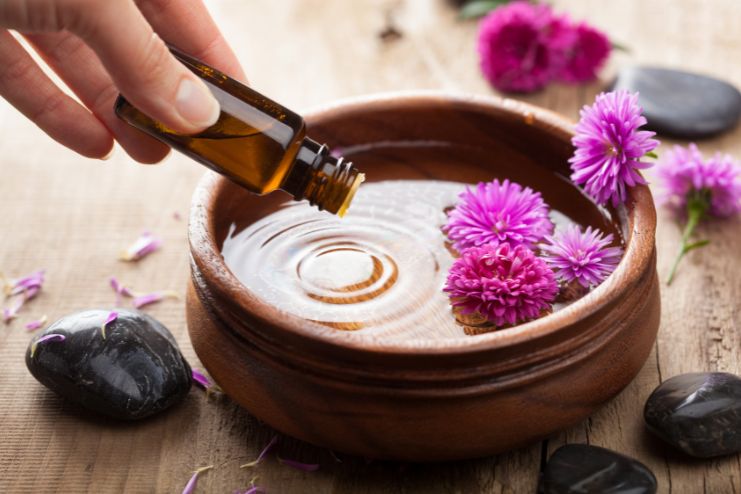
Essential oils can provide aromatherapeutic benefits to your bath if used safely. Undiluted oils can burn the skin, so always dilute with a carrier oil such as jojoba or sweet almond oil.
Recommended Oils:
- Lavender: Encourages relaxation and improved sleep
- Eucalyptus: Expands airways and eases sinus pressure
- Peppermint: Invigorating and cooling
A study in Evidence-Based Complementary and Alternative Medicine validates lavender oil’s anxiety-reducing effects.
Safety Tip: Use 5–10 drops per teaspoon of carrier oil. Consult a medical professional before using this oil during pregnancy or on sensitive skin. It is best to use it in its diluted form.
Read More: Boost Your Mood Naturally: 7 Essential Oil Diffusers for Stress Relief
4. Baking Soda
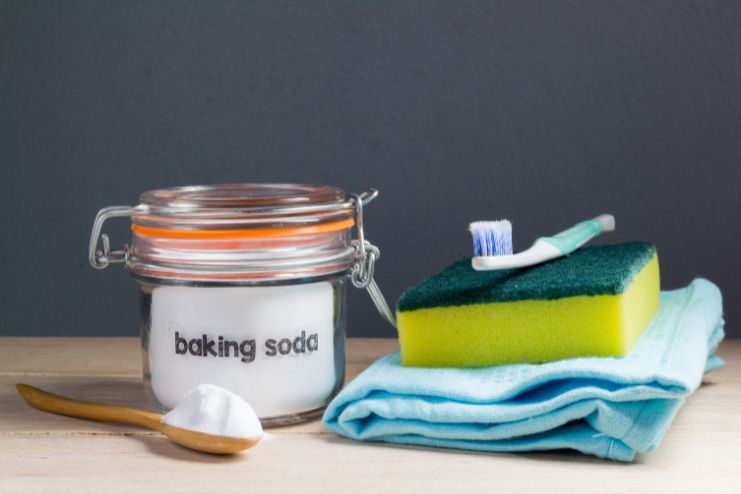
Not only does this kitchen staple neutralize odors, but it also helps balance skin pH and provides mild exfoliation.
Benefits:
- Relieves itchiness, body odor, and razor burn
- Softens water, giving skin a better feel
- Has mild antifungal benefits
In a study, it was found that sodium bicarbonate proved useful for conditions such as psoriasis when applied topically.
How to Use: Add ¼ to ½ cup to bath water once or twice a week.
Read More: Benefits and Warnings of Baking Soda Bath
5. Dead Sea Salt
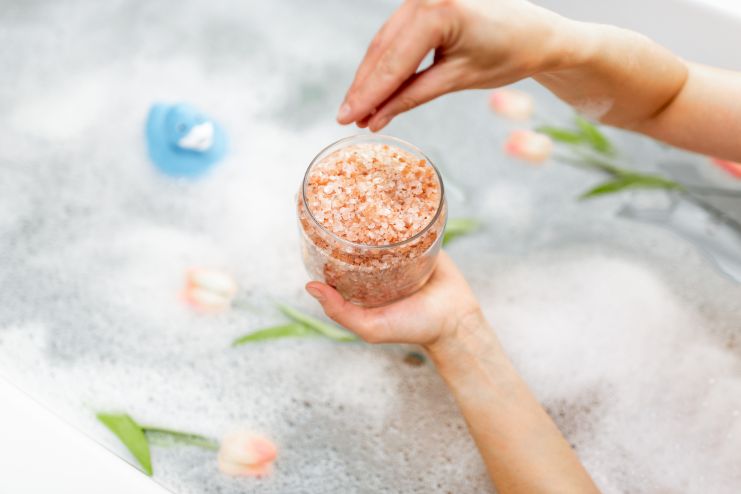
Dead Sea salt is packed with a mix of minerals such as magnesium, potassium, and calcium, thus making it a skin-calming superstar.
Benefits:
- Treats psoriasis, acne, and eczema
- Promotes circulation and skin hydration
- Fosters relaxation and stress relief
As reported by the International Journal of Dermatology, Dead Sea salt baths enhance skin barrier function and hydration in patients with psoriasis.
Usage: Add 1–2 cups to bath water, once or twice weekly.
Check out Dead Sea salt availability here.
6. Coconut Milk or Powdered Milk
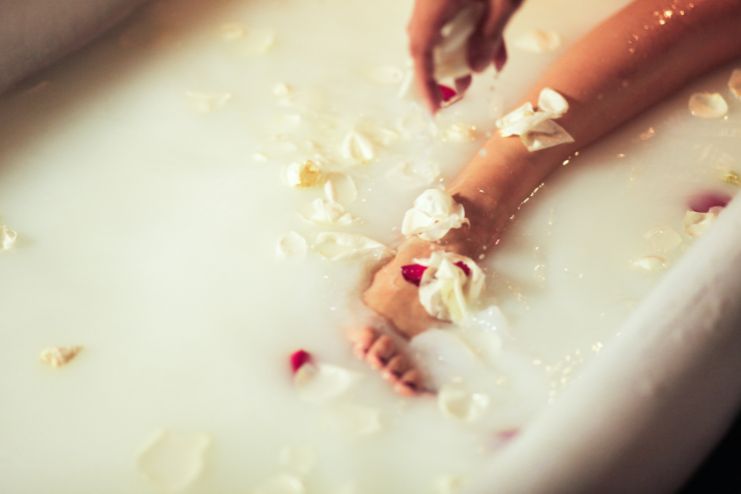
Milk baths are full of skin-loving fats and natural exfoliants.
Benefits:
- Makes skin silky and hydrated
- Gently exfoliates dead skin cells (thanks to lactic acid)
- Soothes minor inflammation
A study in Clinical, Cosmetic and Investigational Dermatology finds that lactic acid enhances the look and feel of skin and how well it hydrates.
Tip: Use 1–2 cups coconut milk or ½ cup powdered milk.
7. Green Tea or Herbal Tea Bags
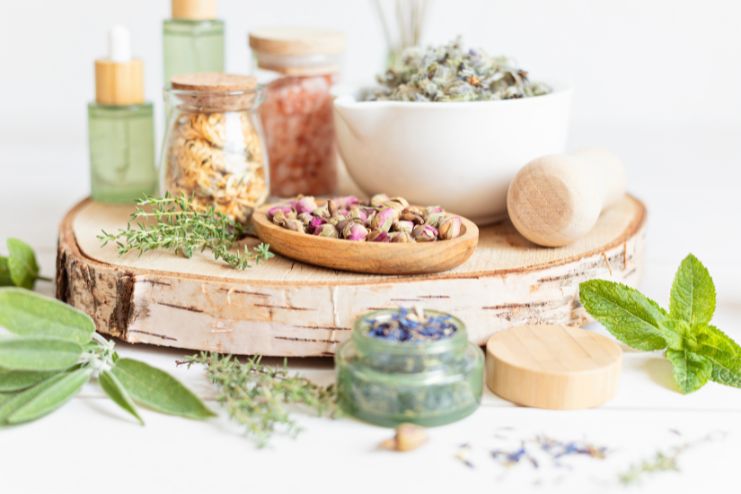
Teas have plant compounds with antioxidant, anti-aging, and soothing properties—ideal for a natural bath remedy.
Benefits:
- Green tea: Rich in polyphenols, shields skin from oxidative stress
- Chamomile: Soothes the nervous system and calms irritated skin
- Calendula: Facilitates wound healing and skin repair
A study in Oxidative Medicine and Cellular Longevity discovered that green tea polyphenols shield against UV damage and skin aging.
How to Use: Steep 5–10 tea bags in hot water and pour into the bath.
If you wish to buy a blend of tea and essential oils to add to your bath, this is a great choice.
The Worst Things To Add to Your Bath (Dermatologist No-Nos)
Here’s a list of the worst things to add to your bath:
1. Undiluted Essential Oils
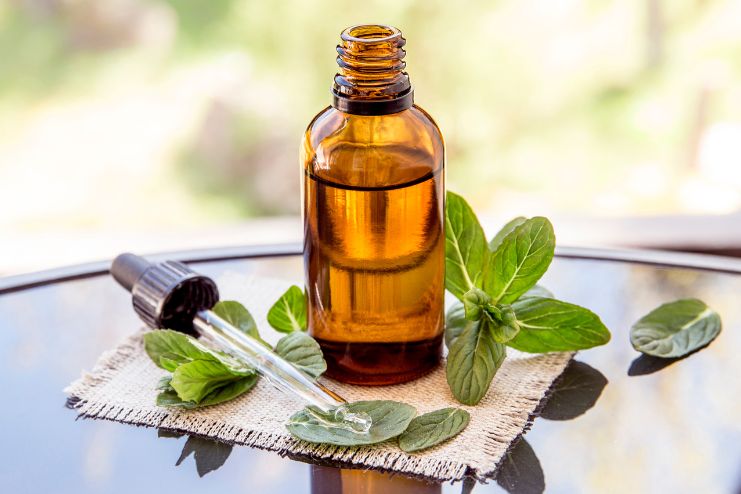
Though strong and scented, essential oils are harsh when directly added to water without dilution.
Risks of using essential oils (undiluted):
- Might cause burns, rashes, or allergic reactions
- Can cause phototoxicity (e.g., citrus oils)
- May disrupt the skin barrier
We must avoid direct use of essential oils because of the high risk of skin irritation.
2. Bubble Bath With Artificial Fragrances
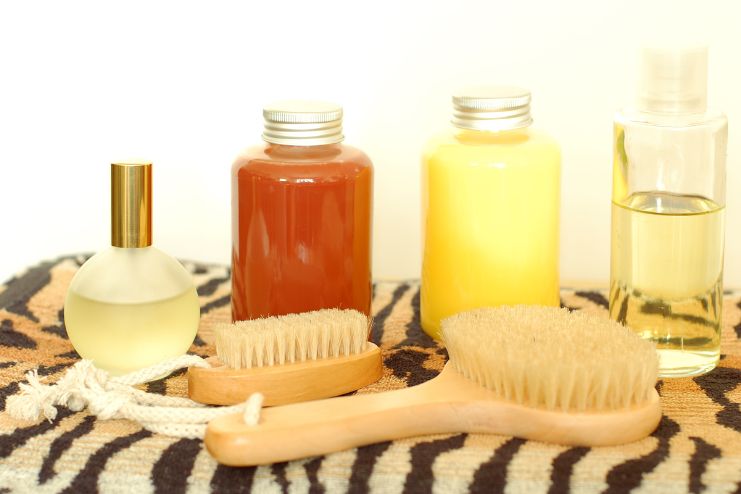
Most commercial bubble baths contain synthetic perfumes and dyes that damage sensitive skin.
Risks of using artificial fragrances in bubble baths:
- Disrupts natural oils and the skin microbiome
- Raises the risk of UTIs and yeast infections
- Worsens eczema or dryness
- Opt for pH-balanced, fragrance-free forms with sensitive skin labels
3. Vinegar (in Large Amounts)
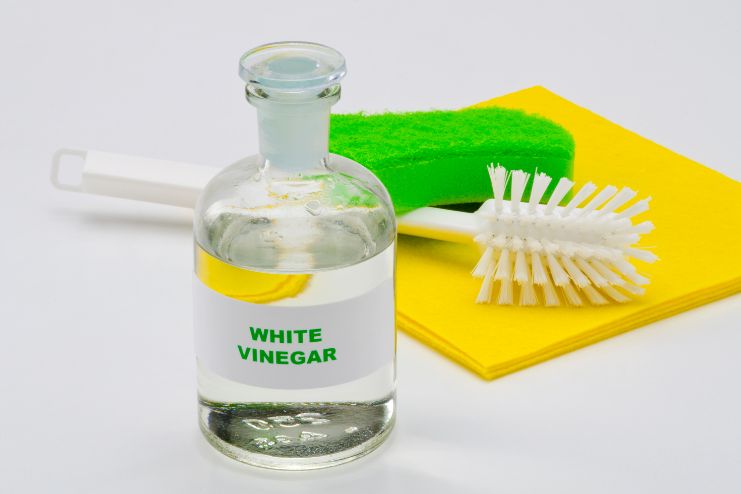
While some individuals apply apple cider vinegar as a natural bath detox, large quantities may irritate the skin.
Risks of adding vinegar in large amounts:
- Stinging, dryness, or worsening of eczema
- Changes skin pH and damages the acid mantle
A small diluted amount (1–2 tablespoons) can help with fungal infections, but always check first with a dermatologist.
4. Glitter Bath Bombs, Dyes, or Synthetic Additives
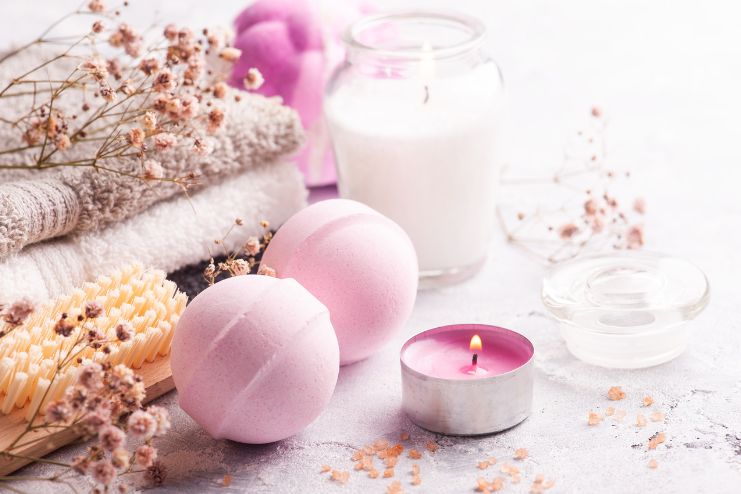
Glitter bath bombs, synthetic dyes are pretty on Instagram, but usually have irritants in them.
Risks of adding glitter bath bombs:
- Contact dermatitis and allergic reactions
- Disruption to vaginal flora
- Glitter microwounds caused by glitter particulates
Instead, use pH-safe bath additives or clean-label homemade alternatives.
5. Bleach or Hydrogen Peroxide

Bleach and hydrogen peroxide are touted at times online as skin lighteners or detoxifiers. However, these chemicals are just too harsh for your bath time.
Risks of adding bleach or hydrogen peroxide to your bath:
- Skin burns, severe dryness, or irreversible skin barrier destruction
- Not advised by dermatologist due to safety issues
- There’s no scientific backing for these being safe bath detox concepts
Tips for a Safe, Spa-Worthy Soak (Expert-Backed)

A good bath soak is easy and gives you the much-deserved relaxation. Here are a few tips to get it right each time:
- Use Lukewarm Water (98°F–105°F / 36.6°C–40.5°C)
Hot water can strip the skin of its natural oils, causing dryness and irritation. Dermatologists advise using lukewarm water, which is usually between 98°F and 105°F (36.6°C–40.5°C), to preserve skin health. This is a temperature range that is warm enough to be soothing while protecting the skin.
- Limit Soak Time to 15–20 Minutes
Taking long baths or keeping the body soaked in water for a long time can excessively dry the skin. According to a study in the International Journal of Dermatology, a 15-minute soak is sufficient to enjoy the benefits of a bath without jeopardizing skin integrity.
- Rinse Off After Using Bath Additives
After bath additives such as salts, oils, or oatmeal have been used, rinsing off with fresh water is recommended. This removes any remaining substances that could irritate the skin or upset its natural pH balance. The National Eczema Association suggests rinsing off after such a bath to avoid possible irritation.
- Patch Test New Ingredients
Before adding new ingredients to your bath, do a patch test on a small part of your skin. This safety measure will help detect any possible allergic reactions or sensitivities, making your bathing experience safe. The National Eczema Association stresses the need for patch testing, particularly for people with sensitive skin.
- Moisturize Immediately After Bathing
Using a moisturizer within three minutes of a bath locks in moisture and preserves the hydration level of the skin. This habit is especially good for people who have dry or sensitive skin. The National Eczema Association recommends moisturizing immediately after a bath to help maintain skin health.
Read More: All You Need to Know About Oatmeal Bath
Final Thoughts

A warm bath is more than just a relaxing habit—it can help your skin, relax your muscles, and calm your mind. But as with skincare, it’s all about the right ingredients.
Use only calming, natural, and correctly prepared additives like Epsom salt, oatmeal, and diluted essential oils. Steer clear of hot, trendy, or harsh add-ins—especially those containing synthetic fragrances, glitter, or skin-disruptive chemicals. Your bath is meant to renew, not strip away, your body’s natural equilibrium.
Bottom line:
“Treat your bath like skincare: gentle, nourishing, and free of fillers.”
References
- https://www.ncbi.nlm.nih.gov/pmc/articles/PMC5452227/
- https://jddonline.com/articles/dermatology/S1545961615P0251X
- https://www.ncbi.nlm.nih.gov/pmc/articles/PMC3612440/
- https://www.ncbi.nlm.nih.gov/pmc/articles/PMC5809431/
- https://onlinelibrary.wiley.com/doi/full/10.1111/j.1365-4632.2005.02459.x
- https://www.ncbi.nlm.nih.gov/pmc/articles/PMC6017965/
- https://www.ncbi.nlm.nih.gov/pmc/articles/PMC3583892/
- https://onlinelibrary.wiley.com/doi/full/10.1111/ijd.12912
- https://nationaleczema.org/blog/everything-you-need-to-know-about-bathing-and-moisturizing
In this Article





















